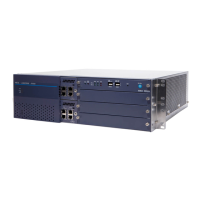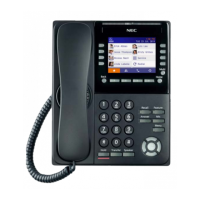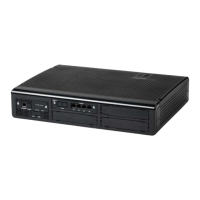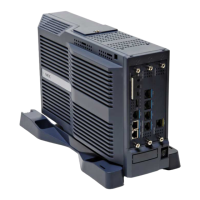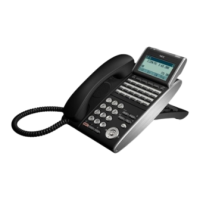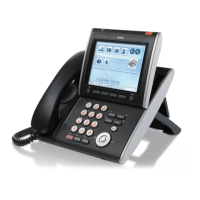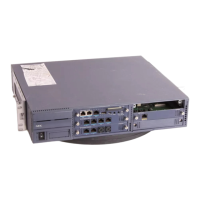UNIVERGE SV8100 Issue 1.0
SV8100 Features and Specifications Manual 2 - 681
A Mesh topology network is not supported.
K-CCIS requires assigning a point code for each office. Point codes differentiate between an
originating office and a destination office in the K-CCIS Network. Assigning point codes
requires the following considerations:
The point code must be unique in the network.
When a system has two or more CCH channels, the same originating point code must
be assigned to all channels in the system.
The UNIVERGE SV8100 can have a maximum of 255 codes assigned to distant
systems.
Using an UNIVERGE SV8100-to-UNIVERGE SV8100 network, centralized voice mail is not
supported when an Open Numbering Plan is used.
Centralized E911 – K-CCIS is supported (US Only).
When Centralized E911 – K-CCIS is not used, each UNIVERGE SV8100 system in a
K-CCIS network must have at least one trunk for Emergency 911 calls (US Only).
Using a NEAX-to-UNIVERGE SV8100 network, the PBX must supply centralized voice mail.
Multiline terminals must have an available Call Appearance (CAP) key to originate or answer
a K-CCIS trunk call.
Direct access of K-CCIS voice or data channels using Line keys or Specified Line Seizure
access codes is prohibited.
The Recall key or Drop key does not function on K-CCIS calls. When either key is pressed,
operation is ignored, and the call continues.
Trunk queuing is prohibited on a K-CCIS trunk route.
The ability to route an incoming DID call directly across a K-CCIS link (Direct Inward
Dialing
- K-CCIS) is supported only when a Closed Numbering Plan using F-Routes is used.
This feature is not supported by the CD-4ODTA Analog Line interface.
Up to four CD-CCTA blades can be assigned per system.
Extension numbers cannot start with 0 or 9.
Internal Calls, transferred calls, and K-CCIS calls do not provide Caller ID to single line
telephones.
Caller ID Call Return feature is not supported with K-CCIS calls.
Call Park Searching is supported only in the local system.
When the system searches the Dial Extension Analyze Table (PRG 11-20-01), the system
uses prefix searching, giving the lower table number the higher priority. For example, the
user programs 211 in table 1 and 2113 in table 2, then dials 2113, the system selects table 1.
When using ARS Class of Service Matching, CCIS calls will always follow Class of Service 1.

